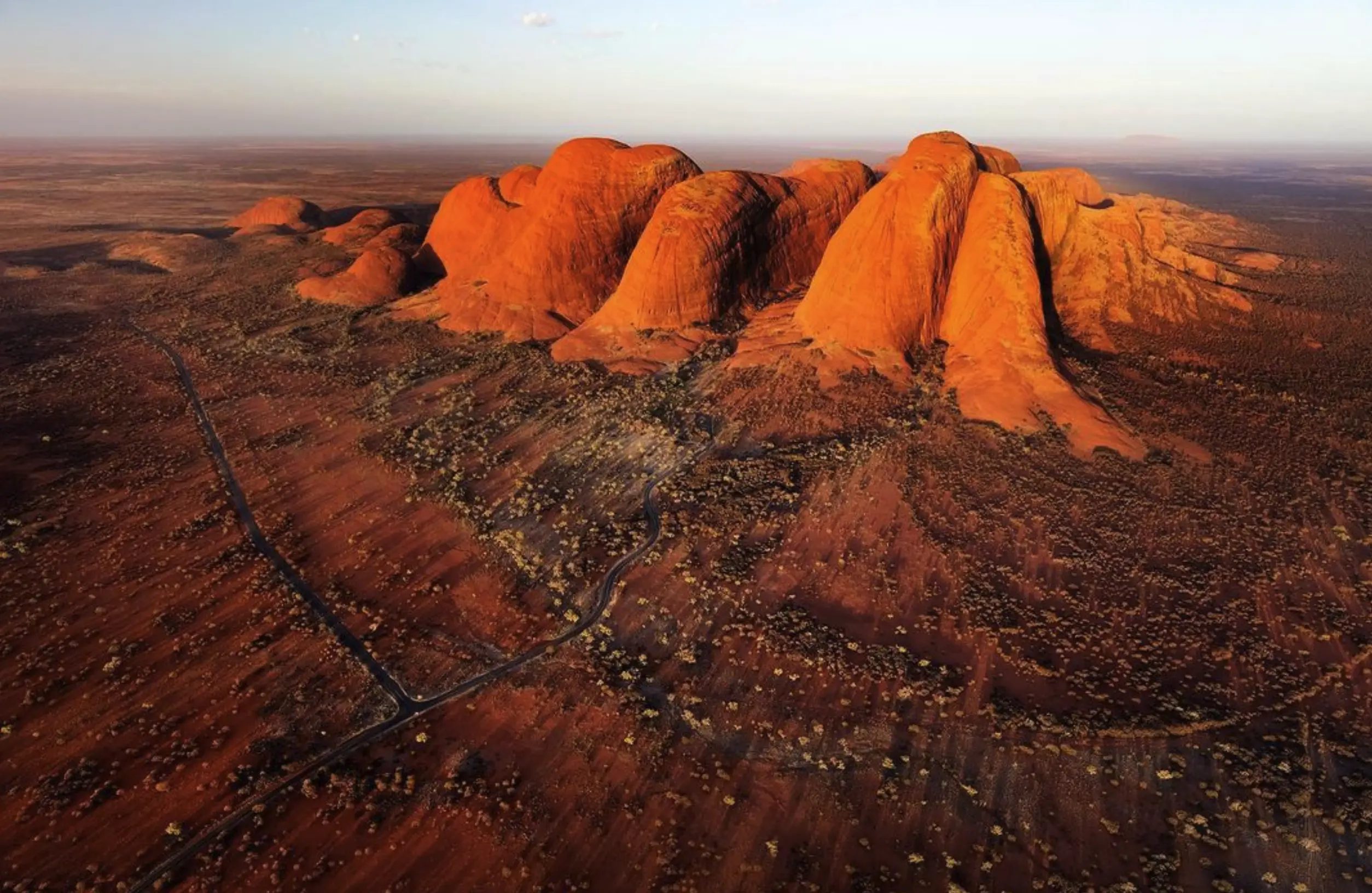Hidden in the heart of Australia’s Red Centre lies Uluru, an immense sandstone formation that rises majestically from the flat surrounding bushland. As you embark on a journey around this colossal monolith, its sheer size becomes more apparent with each step. Measuring around 3.6 kilometers in length and 1.9 kilometers in width, Uluru’s perimeter stretches roughly 10 kilometers, presenting a formidable expanse for those seeking to explore its contours. This article uncovers the true distance around Uluru, weaving through its cultural significance and natural beauty, essential for any Uluru 3 day tour.
The Grand Scale of Uluru

Often perceived as a solitary giant, Uluru is an iceberg of a structure with most of its mass hidden beneath the desert’s surface. Its elevation of 348 meters above the plain paints only part of the picture. To truly grasp its scale, one must take the full 10-kilometer journey around its base, where each angle offers a new perspective, each crevice a different tale of geological time, and each color a distinctive shade as the sun voyages across the sky. This voyage not just measures distance but time and spiritual depth, integral to the Anangu culture and its millennia of stories.
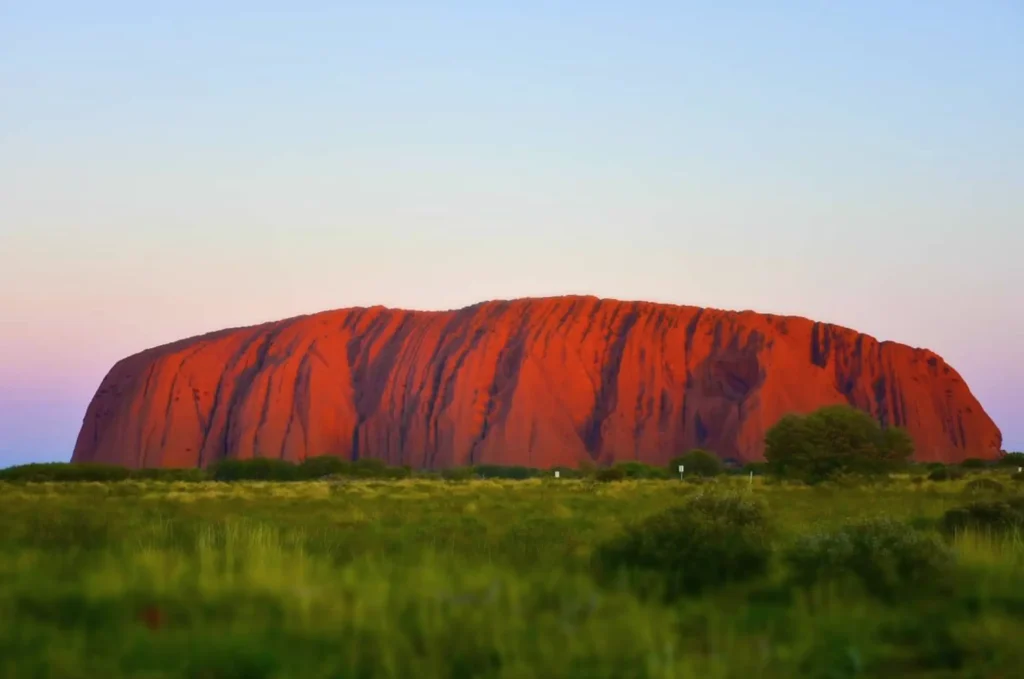
Walking Around the Base of Uluru
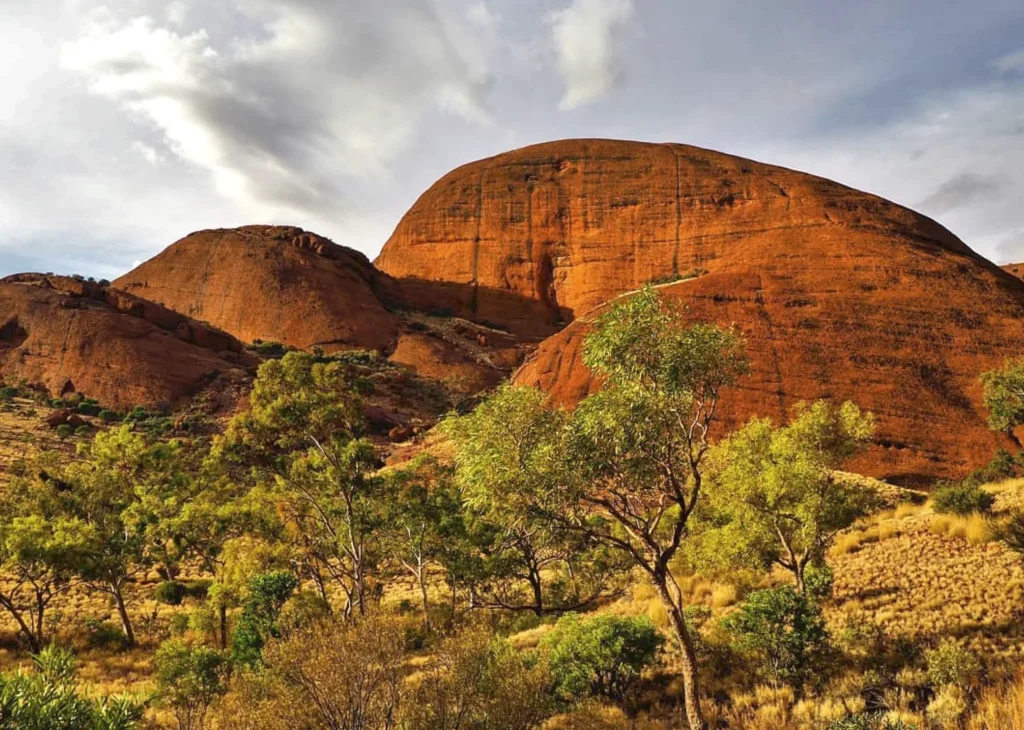
Preparing for the Trek: What You Need to Know
Before tackling the walk around Uluru, visitors must keep certain considerations in mind. The walk is best undertaken in the cooler hours of early morning or late afternoon to circumvent the sweltering midday heat. Armed with water, sun protection, and comfortable footwear, you are ready to embark on the enlightening perimeter walk. Here, you’ll experience not just a physical journey but a cultural voyage as you witness ancient rock art and sacred sites significant to the Anangu, the traditional custodians of the land.

Best Times to Visit and Walk Around Uluru
The ideal time to visit Uluru for a 2 day tour is during the cooler months of May to September when the desert climate is more forgiving. Moreover, the low angle of the winter sun accentuates the rock’s textures and colors, enriching the visual experience of the journey. Early morning offers the dual benefit of milder temperatures and the opportunity to witness the sunrise casting its first crimson glow on Uluru, igniting the rock in a blaze of color.
Navigating the Uluru Base Walk: Tips and Insights
Embarking on the Uluru Base Walk is an adventure that requires preparation and respect for the land. Signposts and information plaques dot the pathway, guiding visitors and enriching their understanding of the site. As a gentle reminder, parts of the track are to be avoided as they pass by areas sacred to the Anangu. The path is well-marked, ensuring a seamless immersion in the experience while preserving the dignity of the cultural practices.
Respecting Local Customs and the Environment
As custodians of the land, the Anangu people request that visitors respect their cultural laws and the sensitive environment surrounding Uluru. It is essential to keep to the path, take all rubbish with you, and refrain from entering closed areas or taking photographs of sacred sites. These measures aren’t merely rules; they are expressions of respect towards an ancient culture and its connection to the land, a theme central to any 2 day Uluru tour.

| Item | Description |
|---|---|
| Water | Bring at least one liter of water per person to stay hydrated |
| Sun Protection | Wear a hat, sunscreen, and sunglasses to protect against the sun |
| Footwear | Sturdy walking shoes or boots for the natural terrain |
| Binoculars | Optional, for spotting wildlife and viewing distant rock art |
| Camera | For capturing the stunning landscapes (but no photography in sacred areas) |
| Map/Guidebook | To navigate and learn about the cultural and natural features |
Highlighting the Scenic Stops Around Uluru
As one walks the circumference of Uluru, numerous culturally significant and visually compelling stops present themselves. Each offers a moment of pause, deep connection, and a chance to reflect on the ancient narratives woven into the landscape. Listed below are numbered lists highlighting these key points of interest and natural features.
The Cultural Landmarks: Key Points of Interest on the Uluru Base Walk
- Kuniya Walk: Nestled on the eastern side of Uluru, this leads to the Mutitjulu Waterhole, a serene spot shrouded in legend, where visitors can find ancient rock paintings and a sense of tranquility.
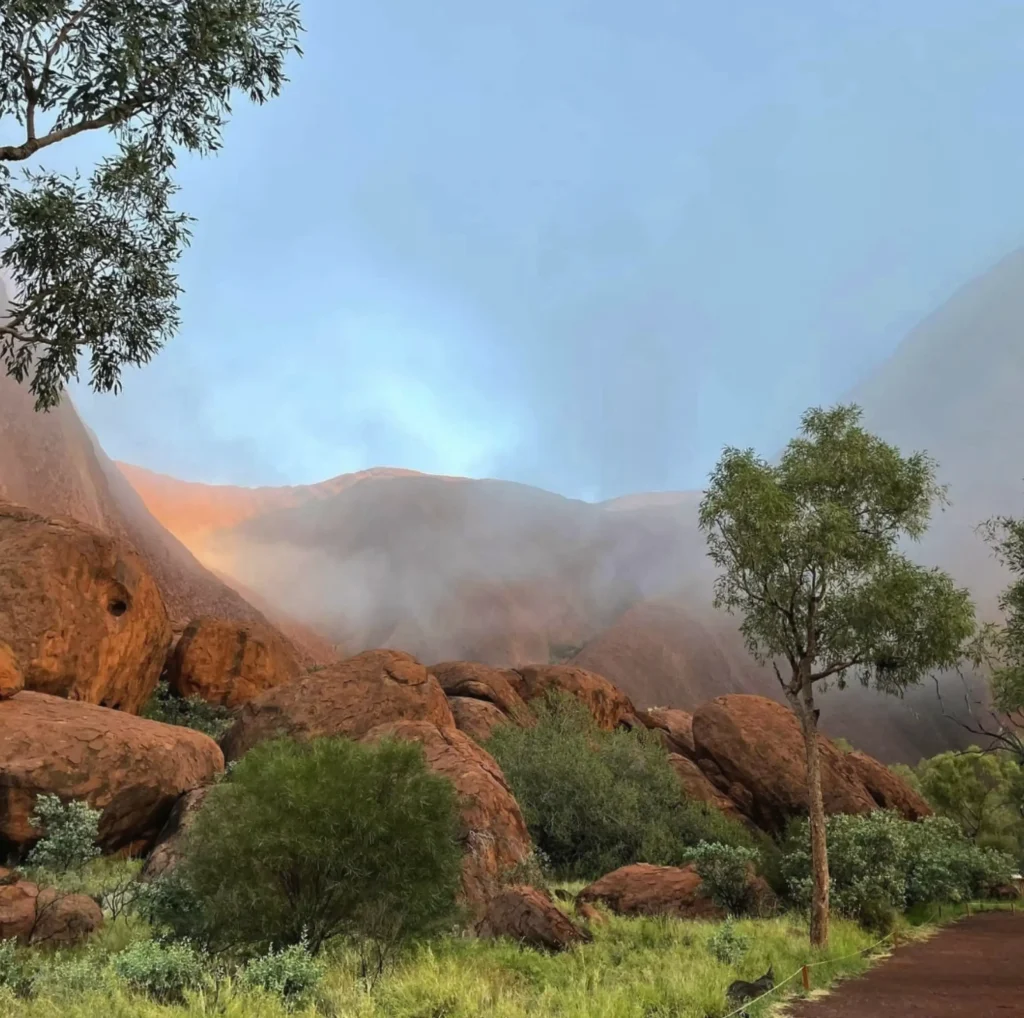
- Mala Walk: A meandering path that takes you close to impressive rock formations and teaches about the Mala people’s stories and their traditional way of life prior to European contact.
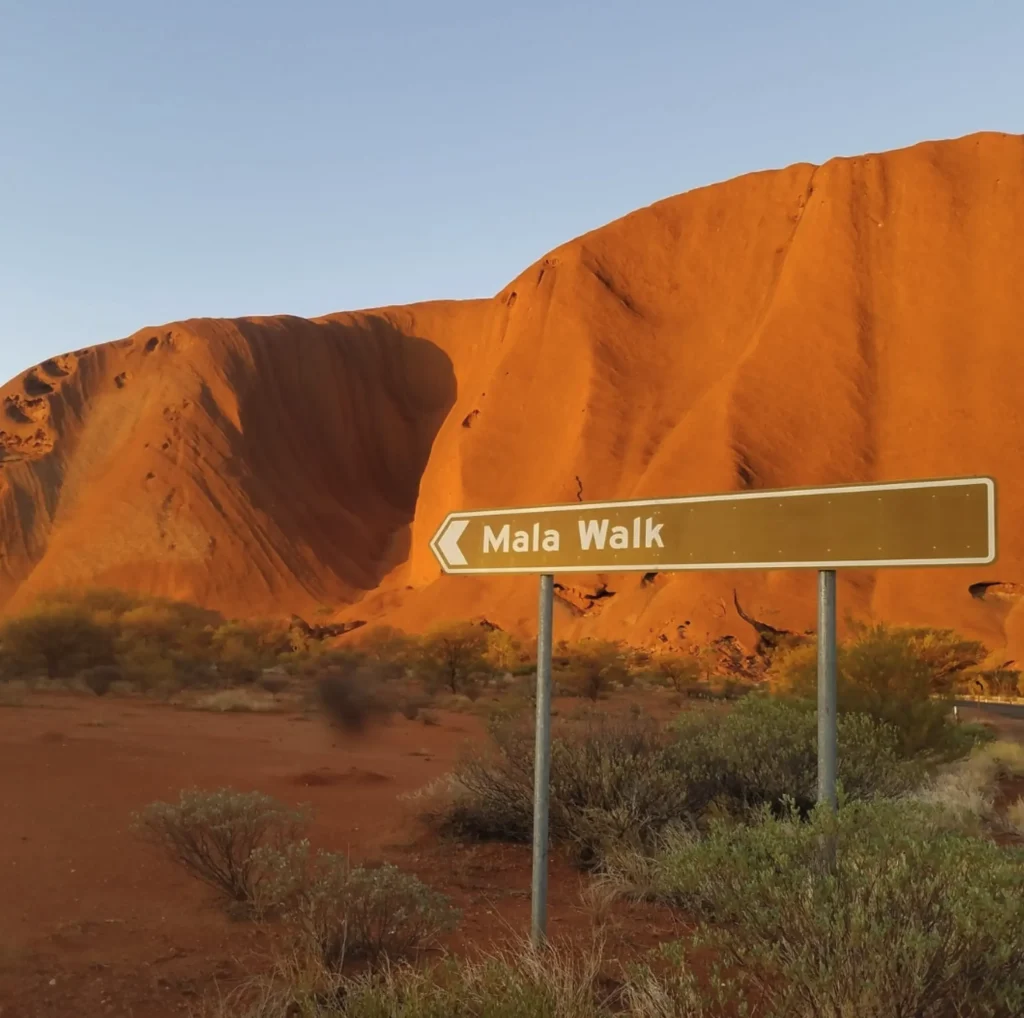
- Talinguru Nyakunytjaku: A viewing area that provides panoramic sunrises and sunsets over Uluru, bestowing visitors with unforgettable moments of Uluru’s natural light show.
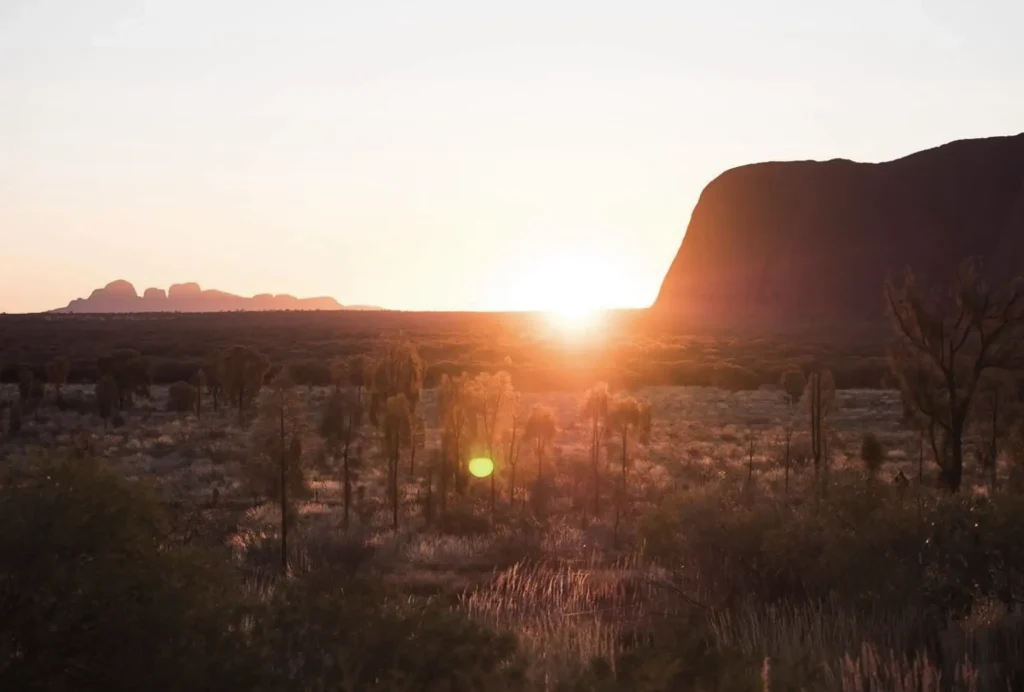
Nature’s Artistry: Geological Features and Flora and Fauna
- Weathered Cave Formations: Eons of erosion have sculpted Uluru’s walls into a gallery of caves and overhangs, each telling a different chapter in the rock’s natural history.
- Desert Flora: The track is lined with resilient plants adapted to the harsh outback conditions, such as the Bloodwood Tree and native grasses that shimmer gold in the sunlight.
- Wildlife Sightings: Off-track, one might glimpse the elusive dingo or hear the chatter of the vibrant Little Corella, enriching the sensory experience of the walk.
Challenges and Rewards of the Complete Uluru Circuit
Completing the full distance around Uluru is a physically demanding feat, particularly under the unforgiving sun. It’s vital that walkers prepare with sufficient water, appropriate clothing, and ample time. The walk is relatively flat but requires stamina. Knowing one’s limits is paramount, and breaks at shaded rest areas are encouraged. Having a sense of preparedness and being in reasonable physical condition ensures a rewarding and safe experience.
More than just physical exertion, the walk around Uluru is an emotional journey. With each step, visitors are drawn deeper into the spiritual realm that Uluru commands. Witnesses to the living culture of the Anangu, walkers may feel a profound resonance, a connection to the ancestry, and a shared sense of custodianship for the land’s natural and cultural heritage which can be truly transformative.
Uluru from Different Perspectives
While walking provides an intimate encounter with Uluru, there are other ways to appreciate its grandeur from different vantages. A numbered list below showcases some alternative tour options that are vital for a comprehensive 2 day Uluru tour, including aerial views and unique terrestrial perspectives, offering a holistic experience of the area.
- Helicopter Tours: Soaring overhead, one can appreciate the vastness of Uluru and the surrounding desert landscape, revealing the full scope of its imposing presence.
- Camel Tours: A camel-back journey around the rock imitates the slow-paced explorations of early settlers, offering a serene, ground-level view of this legendary monolith.
Conclusion: Embracing the Distance Around Uluru
The distance around Uluru may be a mere 10 kilometers, yet the journey around its breadth is an expedition through time, culture, and natural splendor. Soaking in the sights, sounds, and stories of this sacred space emphasizes the transformative power of presence and respect. Whether engaging in a 2 day Uluru tour or a brief visit, the experience is an intricate tapestry of geological wonders intertwined with deep spiritual significance. It is an encounter that leaves an indelible mark on the heart, urging a continual appreciation for our world’s astonishing diversity and heritage.
ouy
FAQs: Discovering the Secrets of Uluru’s Perimeter
How long does it take to walk around Uluru?
Typically, the walk takes around 3 to 4 hours, but this can vary greatly based on individual pace, weather conditions, and stops made to appreciate the numerous cultural and natural sightings.
Can you climb Uluru?
Climbing Uluru is no longer permitted as of October 2019. This decision honors the Anangu people’s wishes and helps preserve the sacred integrity of this significant cultural landmark.
Is it possible to cycle around Uluru?
Cycling is allowed on a designated path that runs parallel to the walking track. You can rent bicycles nearby, giving another environmentally friendly option to discover the majesty of Uluru.
What kind of wildlife might I see around Uluru?
The environment is host to various species, such as native birds, lizards, and dingoes. Observing them quietly and respectfully heightens the overall Uluru experience.
Are there any guided tours available to learn more about the cultural significance of Uluru?
Many guided tours offer diverse insights into Uluru’s significance to the Anangu and the region’s ecology. Opting for one of these tours enriches visitors’ experiences, especially during a short 2 day Uluru tour.
